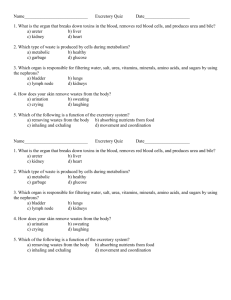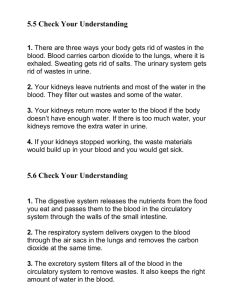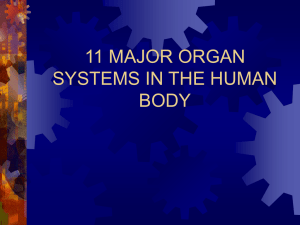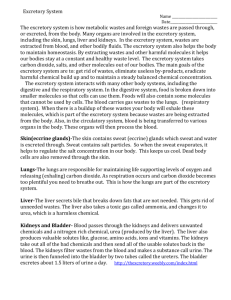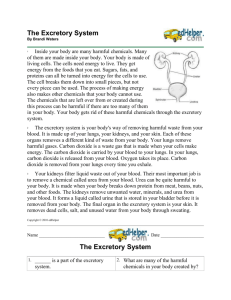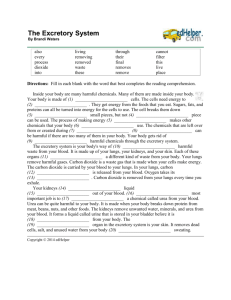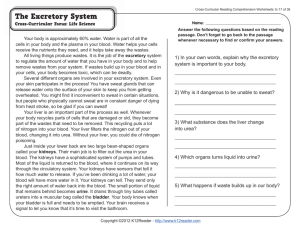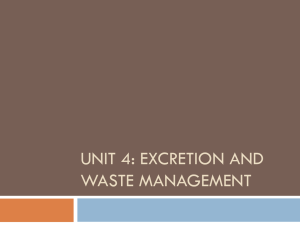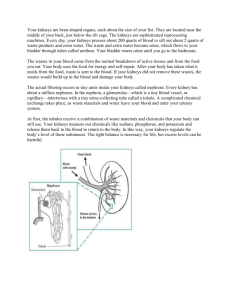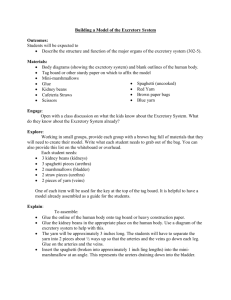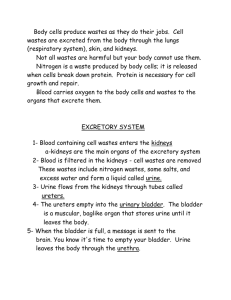The Excretory System Medical Assistant Science Mrs. Ashley The
advertisement
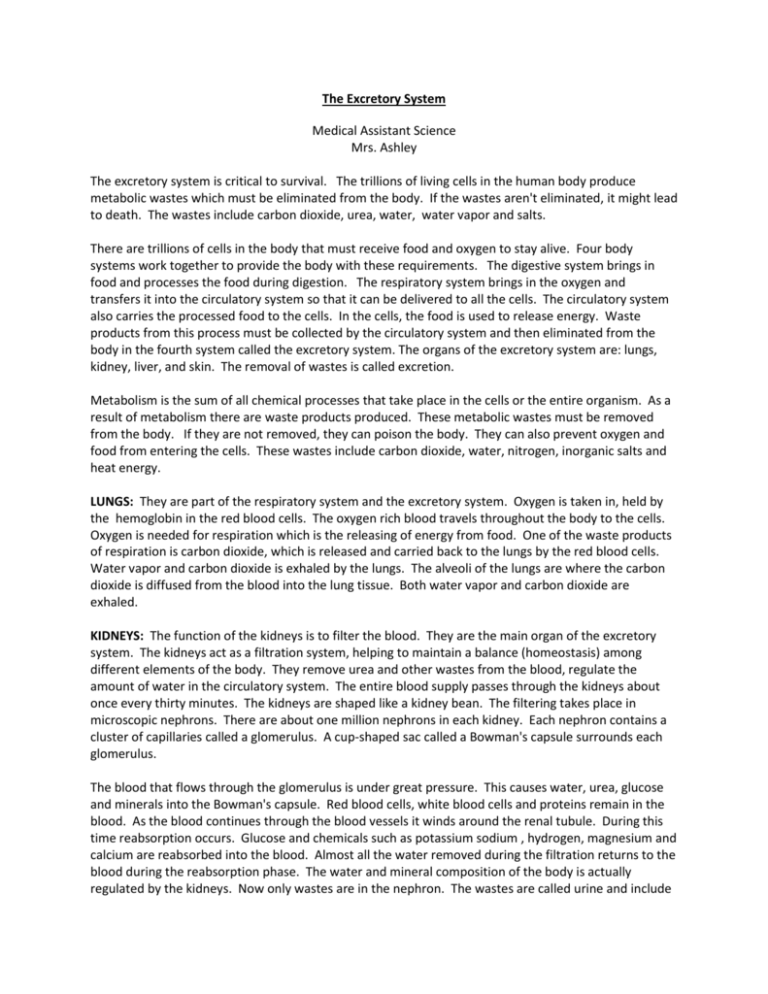
The Excretory System Medical Assistant Science Mrs. Ashley The excretory system is critical to survival. The trillions of living cells in the human body produce metabolic wastes which must be eliminated from the body. If the wastes aren't eliminated, it might lead to death. The wastes include carbon dioxide, urea, water, water vapor and salts. There are trillions of cells in the body that must receive food and oxygen to stay alive. Four body systems work together to provide the body with these requirements. The digestive system brings in food and processes the food during digestion. The respiratory system brings in the oxygen and transfers it into the circulatory system so that it can be delivered to all the cells. The circulatory system also carries the processed food to the cells. In the cells, the food is used to release energy. Waste products from this process must be collected by the circulatory system and then eliminated from the body in the fourth system called the excretory system. The organs of the excretory system are: lungs, kidney, liver, and skin. The removal of wastes is called excretion. Metabolism is the sum of all chemical processes that take place in the cells or the entire organism. As a result of metabolism there are waste products produced. These metabolic wastes must be removed from the body. If they are not removed, they can poison the body. They can also prevent oxygen and food from entering the cells. These wastes include carbon dioxide, water, nitrogen, inorganic salts and heat energy. LUNGS: They are part of the respiratory system and the excretory system. Oxygen is taken in, held by the hemoglobin in the red blood cells. The oxygen rich blood travels throughout the body to the cells. Oxygen is needed for respiration which is the releasing of energy from food. One of the waste products of respiration is carbon dioxide, which is released and carried back to the lungs by the red blood cells. Water vapor and carbon dioxide is exhaled by the lungs. The alveoli of the lungs are where the carbon dioxide is diffused from the blood into the lung tissue. Both water vapor and carbon dioxide are exhaled. KIDNEYS: The function of the kidneys is to filter the blood. They are the main organ of the excretory system. The kidneys act as a filtration system, helping to maintain a balance (homeostasis) among different elements of the body. They remove urea and other wastes from the blood, regulate the amount of water in the circulatory system. The entire blood supply passes through the kidneys about once every thirty minutes. The kidneys are shaped like a kidney bean. The filtering takes place in microscopic nephrons. There are about one million nephrons in each kidney. Each nephron contains a cluster of capillaries called a glomerulus. A cup-shaped sac called a Bowman's capsule surrounds each glomerulus. The blood that flows through the glomerulus is under great pressure. This causes water, urea, glucose and minerals into the Bowman's capsule. Red blood cells, white blood cells and proteins remain in the blood. As the blood continues through the blood vessels it winds around the renal tubule. During this time reabsorption occurs. Glucose and chemicals such as potassium sodium , hydrogen, magnesium and calcium are reabsorbed into the blood. Almost all the water removed during the filtration returns to the blood during the reabsorption phase. The water and mineral composition of the body is actually regulated by the kidneys. Now only wastes are in the nephron. The wastes are called urine and include water urea and inorganic salts. There may also be sugar and nutrients present if there is an excess of these substances in the blood. The major blood vessels are the renal artery and the renal vein. BLADDER: Urine travels from the nephrons into the center of the kidneys. A tube called ureter will carry the urine which is amber colored as it travels into a muscular sac called the bladder. The bladder is capable of holding about 470 milliliters of urine. When the bladder is full a signal is sent to the brain and the fluid is released into the urethra. LIVER: This is the largest organ of the body. It is part of the circulatory, digestive and excretory system of the body. The liver breaks down some proteins and other nitrogenous compounds by a process called deamination. a nitrogenous waste called urea is formed. The liver also removes poisonous substances, such as mercury in fish, poisonous fumes from paint and chemicals sprayed on food. The liver also changes hemoglobin from dead red blood cells into bile, which is used in the small intestine to break down fats. Bacteria from the large intestine is removed from the blood by the liver. SKIN: Sweat come out of pores in the skin. Sweat is a mixture of three metabolic wastes: water, salts, and urea. As the body sweats it cools the body and excretes wastes. The outer layer of the skin is called the epidermis and the inner layer is called the dermis.
